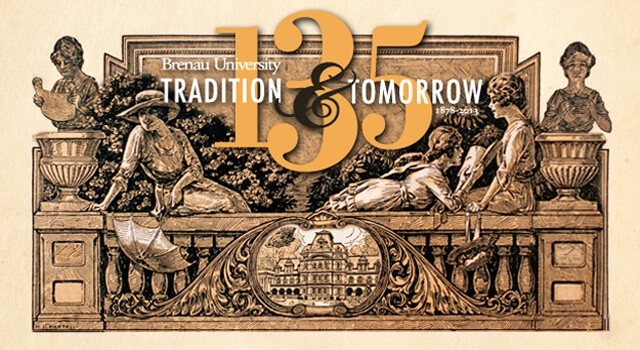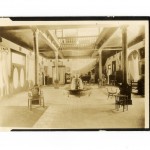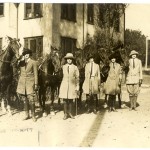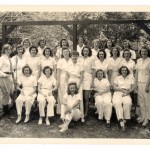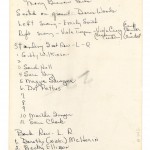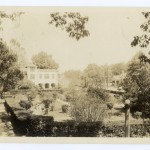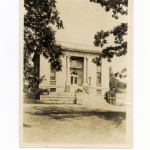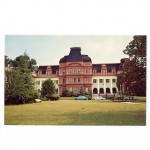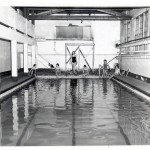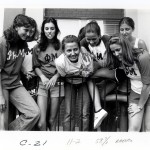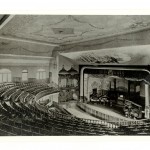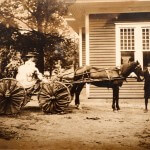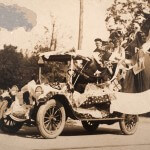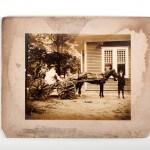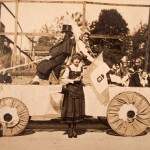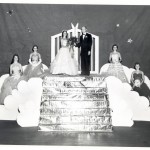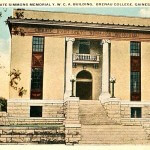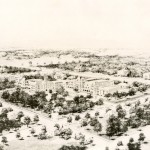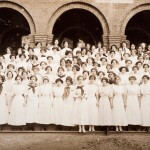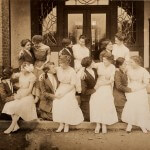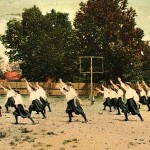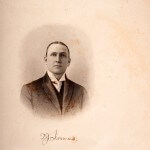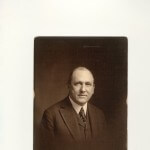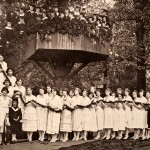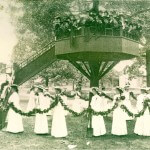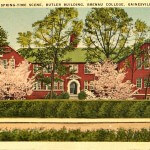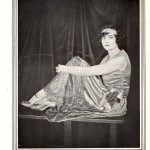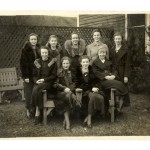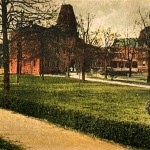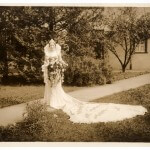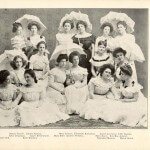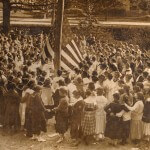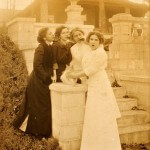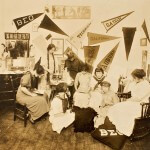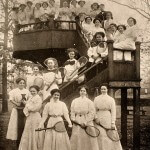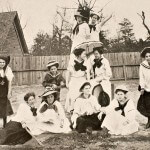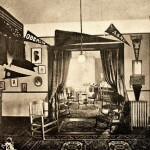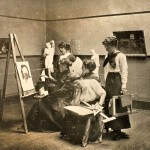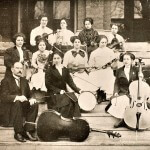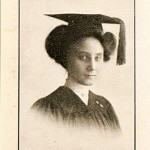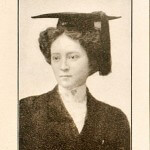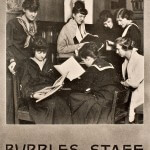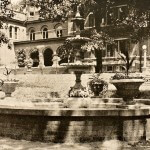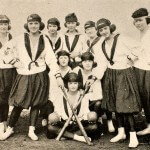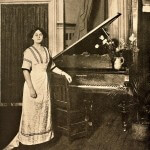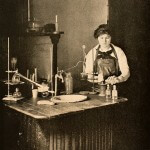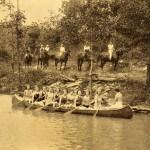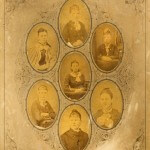Exceedingly Rare: Brenau at 135
Brenau celebrates its 135th anniversary during the 2013-14 academic year. In addition to the planned special activities that you can read about elsewhere in this magazine – and other yet-to-be-announced events to be publicized on the www.brenau.edu Web site – you will encounter articles throughout this anniversary issue that highlight different parts of the Brenau journey. When an institution has been around as long as Brenau, its history reveals interesting, sometimes controversial, aspects of the times through which it survived, the people it encountered along the way and the things it accomplished. Charles H. ‘Trey’ Wilson III, assistant professor of political science at University of North Georgia in Dahlonega, compiled a soon-to-be published, ‘warts-and-all’ history of the institution that was founded in Gainesville as the Georgia Baptist female Seminary. This article is based on Wilson’s observations from his study of Brenau and excerpts from his book.
Like all colleges and universities, Brenau is fundamentally a product of human relations.
Almost everything the institution was, is, or will become is the result of a remarkable and long-lived negotiation between two key groups: Brenau’s students and Brenau officials, who are collectively the institution’s faculty, administration, and other student services staff. In the arenas of such contested spaces as college athletics, college rules and regulations, and academics, these negotiators sparred, more or less amicably, toward constructing what each side saw as “their Brenau,” their ideal version of the college. Brenau, then, is also a product of compromise – oftentimes (but not always) of the willing variety between these contesting sides.
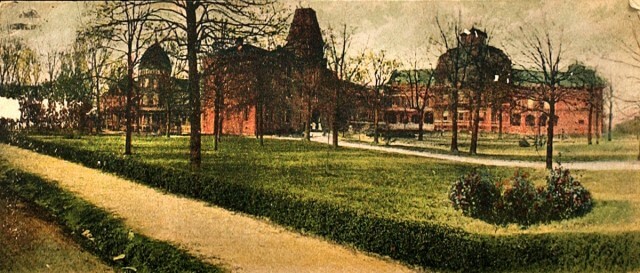
Note that from the outset, Brenau’s students and Brenau’s faculty and staff members have never worked entirely at cross-purposes. Although they have had their differences, since the founding of the college, there was actually much common ground between the two camps about what the character of the institution should be. In particular, both sides of negotiators would have worked to cultivate what historian Frederick Rudolph termed the “collegiate way,” which was “the notion that a curriculum, a library, a faculty, and students are not enough to make a college. It is an adherence to the residential scheme of things. It is respectful of quiet rural settings, dependent on dormitories, committed to dining halls, permeated by paternalism. It is what every American college has had or consciously rejected or lost or sought to recapture.”
This was Brenau from inception, which faculty, staff and students embraced. What the two sides differed on were the details.
By its very existence, Brenau is genuinely exceedingly rare. Only a few years ago, there were several hundred women’s colleges in the United States. Today, there are just 46.
Others ceased to be not because single-gender education is a bad idea. Far from it: The benefits of attending a women’s college are numerous, irrefutable and obvious to anyone who’s been there, as Brenau alumni will know. Although any complete history of what is now Brenau University must include the great strides the institution has made in coeducational activities beyond the Women’s College, it is important to note that the institution keeps the Women’s College at the forefront in all it does. In fact, its leadership vigorously asserts that the institution today derives all it is and all it does from its roots as a women’s college.
The bottom line, however, is that Brenau has endured – indeed, Brenau has thrived – because it has been, and still is, remarkable in a myriad of ways that so many other places simply could not manage to be.
Often, especially by today’s standards, being remarkable means, innovation and excellence – and staking claims to “being first” in various endeavors. Despite its adherence to tradition throughout its long history, and sometimes stubbornly clinging to the status quo, Brenau not only has been the best in many things but also the first. Here are some highlights:
Academic Firsts
Brenau was an academic innovator that adopted novel academic policies and that created several novel programs for young women in the belief that such programs would be popular and empowering. In particular, Brenau blazed trails among southern women’s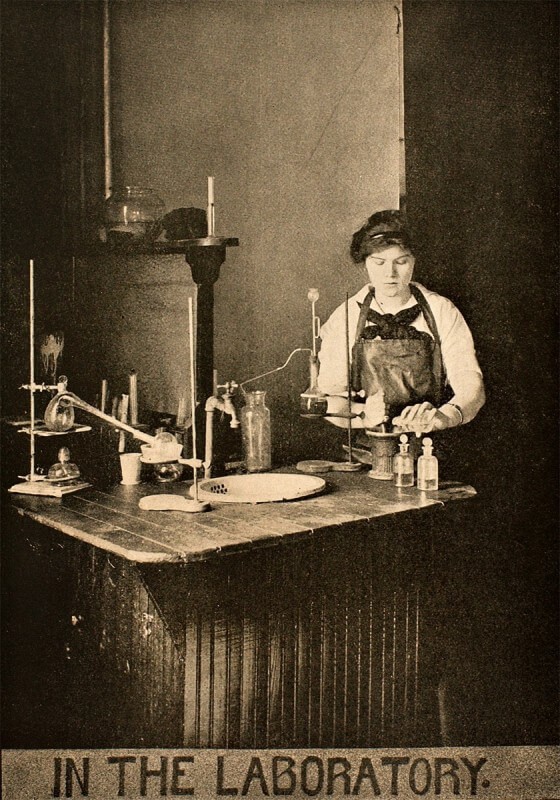 colleges by supporting early-on a business division, a teacher-education division, a domestic science program, and uncommonly robust conservatory offerings. Brenau was also apparently the first college anywhere to let students count courses in art and music as elective credits toward a regular baccalaureate degree.
colleges by supporting early-on a business division, a teacher-education division, a domestic science program, and uncommonly robust conservatory offerings. Brenau was also apparently the first college anywhere to let students count courses in art and music as elective credits toward a regular baccalaureate degree.
Prior to 1900, Brenau was a typical southern women’s college. Founded as the Georgia Baptist Female Seminary in 1878, the institution required students to follow a standard regimen class by class. Freshmen, for example, studied analytical arithmetic, the work of Caesar Virgil in Latin, English grammar and composition, algebra and geometry, French, Roman history and mythology, plain bookkeeping and penmanship. Sophomores finished Virgil, French, geometry and algebra, added trigonometry; surveying, Latin prosody, navigation, botany, composition and elocution, and natural philosophy. Juniors continued many of those courses but also added study in Cicero’s Orations, rhetoric, analytical geometry, astronomy, physiology, Homer’s Iliad, composition and elocution, and chemistry. The senior class studied philosophy, logic, moral science, theology, geology and Greek.
In about 1900, H.J. Pearce, who had acquired controlling interest in the proprietary institution, abandoned the seminary model and name in favor of a the new name Brenau College that he had coined. Educated in part in Germany, Pearce took the first syllable from a German world dealing with refinement of metals and, remaining true to the classical education for which the school was known, he added the first syllable of the Latin word for gold, which is also the symbol for the metal on the Periodic Table of Elements. With its new collegiate status Brenau evolved organizationally. The 1900 Catalogue indicated that the college operated four departments: a conservatory, a business department, an “intermediate or subcollegiate department, of two years,” and a “collegiate department, of four years,” subdivided into several schools such as English and ancient languages.
From very early-on, Brenau students had the option of enrolling in elective courses outside of Brenau’s core curriculum, a novel concept in many colleges. The idea emerged in 1869 during the inaugural address of Harvard College President Charles W. Eliot who wanted to allow undergraduates to select their own patterns of study to make academics more interesting and relevant. Although the idea had some appeal, it did not receive universal endorsement.
First Electives
Brenau embraced electives warmly almost from the start. The July 2, 1905, edition of The Atlanta Constitution reported that Brenau had adopted the “radical innovation” of recognizing music courses for credit toward a degree. The Constitution indicated that, despite the fact that music had a long and storied place in human history, “in no college for women has definite provision been made for the study of music as a part of the regular college course.” Brenau would be the first to declare that music has an intellectual value and, as a course of study, should be put on par with others. Brenau beat Converse College in South Carolina by three years and Agnes Scott in Atlanta by eight in this initiative.
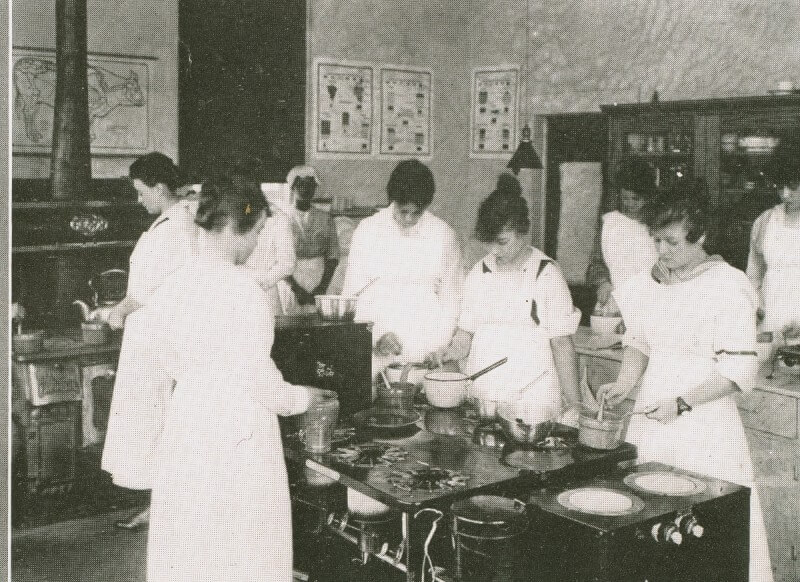 By today’s standards, some of Brenau’s academic “firsts” may seem contrary to the institution’s role in the empowerment of women, but they were nonetheless a bit revolutionary. In 1904 The Constitution reported that Brenau “ believes that its highest duty and privilege is to fit its girls to become homemakers; to know every duty pertaining to the care of a well-ordered home, and to this end it has established its department of Domestic Science.” College officials believed that, “Brenau’s ideal woman is one who is not only well educated from a literary or musical standpoint, but who can, when occasion demands, make a garment, cook a meal, or keep a home in beautiful order.”
By today’s standards, some of Brenau’s academic “firsts” may seem contrary to the institution’s role in the empowerment of women, but they were nonetheless a bit revolutionary. In 1904 The Constitution reported that Brenau “ believes that its highest duty and privilege is to fit its girls to become homemakers; to know every duty pertaining to the care of a well-ordered home, and to this end it has established its department of Domestic Science.” College officials believed that, “Brenau’s ideal woman is one who is not only well educated from a literary or musical standpoint, but who can, when occasion demands, make a garment, cook a meal, or keep a home in beautiful order.”
By 1910, Brenau offered a degree called a “B.D.” (a “Bachelors of Domesticity”) for that “large class of girls who desire to spend two or three years in college to fit themselves for the duties of society and the home.” Importantly, though, Brenau stressed that its aim was not “to train cooks, dressmakers, etc.” but, rather, to train ladies who expected “to require the services of cooks and dressmakers.” Clearly, the college sought to prepare women for not just any home, but rather for upper-class homes – assuredly white – that could afford to hire “help.”
New Degrees
Although home economics thrived early-on at Brenau, it failed at other nearby women’s liberal arts colleges around the same time. Converse College offered home economics as early as 1914, but in 1927 discontinued “all home economics courses.” As early as 1921, the president of Agnes Scott had proposed to its board of trustees to establish “a Department of the Home.” In 1934, J. R. McCain, the college’s next president, was still pressing the case unsuccessfully by supporting the establishment of a department. By contrast, by 1930, Brenau students who completed 66 hours of course work that included courses like “Cookery” and “Dietetics” and “Household Physics” and who satisfied all other requirements for the A.B. degree would be granted a “Home Economics Certificate” in addition to the baccalaureate. By 1940, as one of its bone fide four-year degrees, Brenau offered a “course leading to the A.B. degree with major in Home Economics.”
Curiously, Brenau discontinued the major in the 1950s but re-instated it in the early 1970s just as the “women’s liberation” movement was getting off the ground – and it would keep it almost to the 21st century.
The College’s initial decision to offer such programs was, for the time and place, conspicuous for a Georgia women’s college. Among Georgia’s several women’s colleges, white and black, public and private, Brenau was among the first – if not the first – to offer degree programs for women in education, commercial studies, and/or domestic science.
Brenau’s penchant for getting into untapped corners of the academic marketplace continues today both in the Women’s College and other aspects the university. When it launched its dual degree program in occupational therapy (a bachelor of Science from the Women’s College with a Master of Science at the end of the five-year program) it was one of the first in North America to require graduate study for a degree in the discipline – years before the professional association governing accreditation in occupational therapy required completion of a master’s degree for certification.

Brenau’s first terminal degree was a Master of Fine Arts in Interior design. Although other universities have M.F.A., or doctoral-level course work in interior design, that course work is usually part of a professional degree in a broad field like architecture. Although Brenau was not “first” with the M.F.A., Parsons New School for Design, which established the first interior design program in the nation in 1906, started its first M.F.A. class in 2009, and the already-announced Brenau program was up and running a year later.
Professional Education
Having branch campuses for Brenau in locales outside of Gainesville has always seemed to make sense from a “business” perspective. And, is has been part of the culture of the instruction for most of its 135 years. Sometime around 1905 Brenau opened “Alabama Brenau” on the campus of a failed women’s college, the Union Female College, in Eufaula, Alabama. The location never thrived and ceased operations after a few years. Brenau’s modern expansion efforts, however, would be far more successful.
Starting in the 1970s, Brenau began offering a number of undergraduate and graduate academic programs that gave students access to many careers and not just the few that society had once deemed suitable for women. The college also began reaching out to male and nontraditional students at this time and extended its educational offerings well beyond Gainesville. Changes began in earnest in 1971 when Brenau “chose to enlarge its constituency” by offering evening classes to nontraditional students – mainly working students and men by Brenau’s definition. Brenau formed a “Community Services Division” to oversee this in “response to rapid growth of the nontraditional student population” in its service area.
Some restructuring and a few name changes later, this became the School of Professional Studies and eventually simply the Professional College in 1983. This component of the institution offered “bachelor’s degree programs and master’s degree programs to men and women who elect to study in the evening or at off-campus locations.”
By 1986, the Professional College offered undergraduate and some graduate programs at a dozen sites all around Georgia, including Gainesville. The aim was to make higher education accessible. Also that same year Brenau inaugurated the academic innovation that was its Weekend College program, which was a part of the Professional College – the first such program in the state of Georgia, if not the entire Southeast. Although several colleges and universities offered weekend coursework to students, Brenau was the first Georgia institution to enable students to complete all work for a four-year degree – and some graduate degrees – solely in weekend courses.
By 1993 the Professional College had been replaced by the Evening and Weekend Programs division, which operated alongside the Weekend College. The Brenau Undergraduate and Graduate Catalog of that year indicated that the two programs “have evolved slightly different core curricular requirements” from those of the Women’s College. The difference essentially boiled down to requiring Women’s College students to take an additional foreign language course and an additional physical education course. The remaining degree requirements were similar.
Brenau recently discontinued use of the “Evening and Weekend” differentiation. It also dropped the designation for “Online College” since many students across all platforms, including the residential Women’s College, were taking online courses. However, the expansion beyond the Women’s College clearly led to Brenau’s upgrade to full university status in the early 1990s and it is certainly the foundation of today’s expansion to a doctoral degree-granting institution.
Athletic Firsts
The 1984-85 edition of the student handbook reveals in colorful detail that the Brenau College Fishing Team had been formed during spring of 1981 as “a true innovation in women’s intercollegiate sports. The handbook boasted that in the same year of its founding the team “won its first intercollegiate meet…against men’s teams!”
Apparently fishing foundered fast. After a couple of years there is no more mention of the team in any Brenau publication. However, its existence illustrates an important point: Since the College’s founding, many Brenau students and some faculty members were apparently enthusiastic for athletics, especially intercollegiate athletics.
By the 1920s, Brenau’s most capable athletes desired to perform their feats against rival colleges. The students convinced the faculty to accommodate intercollegiate competition, contrary to the national trend among small liberal arts schools. By a vote of 15-9, faculty authorized students to schedule competitions and a month later Brenau had booked its first basketball game with Howard College from Birmingham, Ala.
For reasons unknown, the game apparently never took place. It would be two years before Brenau’s first actual intercollegiate game – against women form North Georgia Agricultural College in Dahlonega, Ga., described in one newspaper account as “the first intercollegiate game that a girls’ college in Georgia has ever played.”
Brenau took the first game, played Feb. 12, 1927, 14-9. The second game, played Feb. 26, was an even-more-lopsided 56-7.
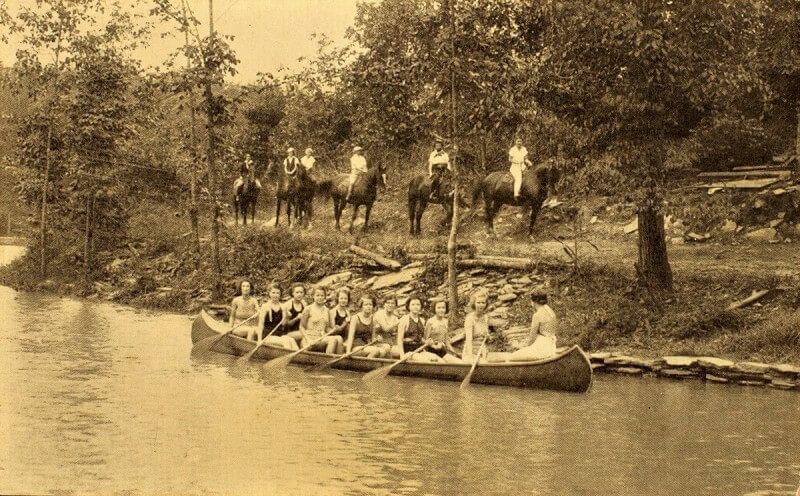 Still, H.J. Pearce regarded the intercollegiate athletics initiative as “experimental,” and there was no evidence Brenau women ever played another game in that era. Brenau added bona fide intercollegiate sports starting in the late 1970s, swimming and tennis. Brenau dabbled with forming a basketball program in 1979 and competitive women’s golf actually existed for a short time in the mid-1980s before folding when the team’s coach left to join the ladies’ professional tour.
Still, H.J. Pearce regarded the intercollegiate athletics initiative as “experimental,” and there was no evidence Brenau women ever played another game in that era. Brenau added bona fide intercollegiate sports starting in the late 1970s, swimming and tennis. Brenau dabbled with forming a basketball program in 1979 and competitive women’s golf actually existed for a short time in the mid-1980s before folding when the team’s coach left to join the ladies’ professional tour.
The swim team often competed against much larger National Collegiate Athletic Association Division I universities, including Clemson, Georgia and Florida 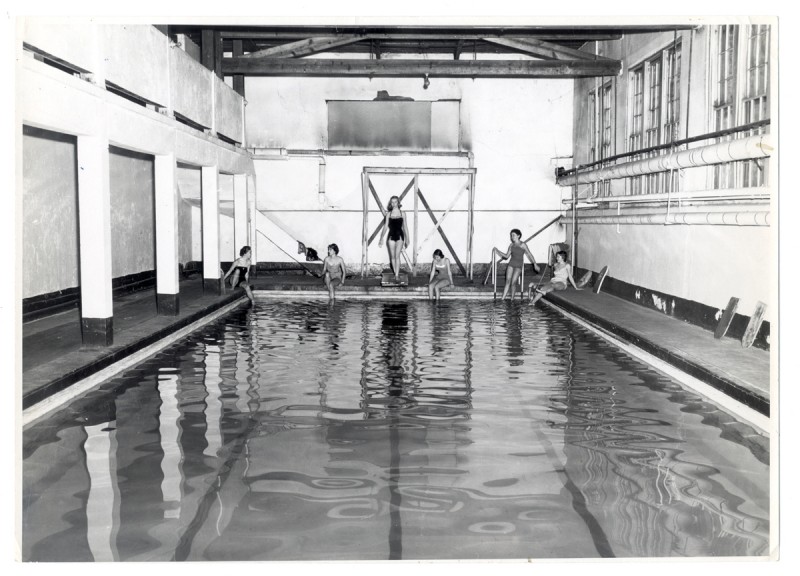 State. Despite the fact that Brenau’s intercollegiate athletic teams were among the newest and the smallest in the country, in the 1970s, 1980s and 1990s, they were also among some of the best. In 1977, on the occasion of losing a swim meet with Brenau, the Georgia Bulldogs women’s swim coach said Brenau “was just a stronger team than we are.”
State. Despite the fact that Brenau’s intercollegiate athletic teams were among the newest and the smallest in the country, in the 1970s, 1980s and 1990s, they were also among some of the best. In 1977, on the occasion of losing a swim meet with Brenau, the Georgia Bulldogs women’s swim coach said Brenau “was just a stronger team than we are.”
After Brenau became a member of the National Association of Intercollegiate Athletics and the Southern States Athletics Conference, the college enjoyed another “first” for a Georgia Women’s College: the first national championship in sports. In 1999 the Brenau tennis team finished the season as the nation’s No. 1 team. Brenau went to the NAIA finals in 2000 and again in 2001, but came up short both times. Then, in 2002, Brenau won its second national championship.
Ten teams currently compete at Brenau, including the recent additions of track and field (which won the SSAC conference championship in its first year) and golf, which starts in the fall of 2013. With four teams finishing in the top 10 nationally in the spring season of 2012 and a fifth in the top 25 in the fall, it is not much of an argument to state that Brenau boasts one of the most successful small college athletic programs and definitely one of the best women’s college programs in the nation.
Firsts for Women
Lucile Townsend Pearce, (who typically went by the name Mrs. Haywood J. Pearce, Sr.) ran the small “operating committee” that governed the College for just over a year following her husband’s death in 1943. (See the related article “The Second President Pearce”). In a way, that made her the first female chief executive of a predominantly white women’s college in Georgia although she never laid claim to the title of president nor was she ever formally inaugurated into the position. For one year, 1945, women held all of the senior administrative offices at Brenau.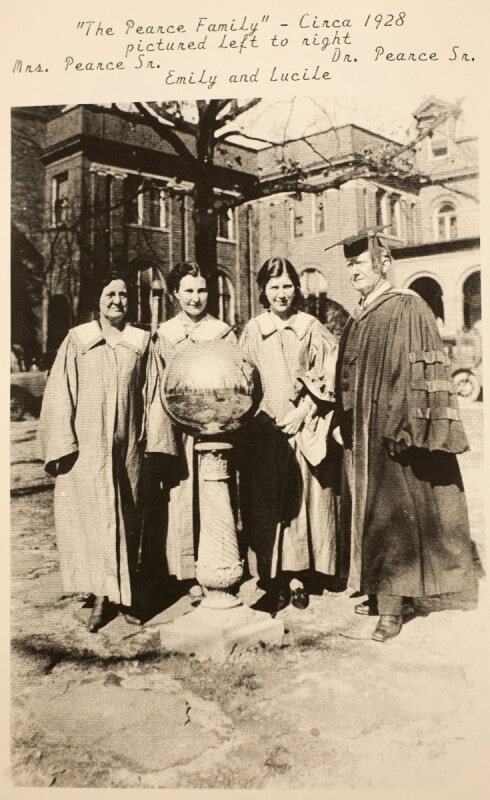
By 1932, according to the university Bulletin, several women were then members of the Board of Trustees, “two of these were first elected in 1920, and it is believed that Brenau College is the first college in the South to have a woman on its Board of Trustees.”
Converse College took pride in 1905 to announce its students had formed a student government association, but it ceded the title of first southern women’s college to create any kind of student self-government and discipline to Randolph-Macon, which created its system five years earlier in 1900. However, Brenau students had by then been electing representatives to positions of authority and creating some campus polices for two years prior – in 1903.
Diversity
In the late 19th century female schools and colleges, particularly in the South, seemed to be more luxury than necessity. This southern academic evolution occured in a deeply segregated South still rebounding from the ravages of abolition of slavery, civil war and punitive reconstruction from the prevailing national notion, as one noted historian described the genesis of such institutions, to facilitate social gain on the girl’s family. They actually had the effect of marginalizing women by relegating them to particular social roles. However, attitudes about what women’s education should be were changing significantly when Brenau opened its doors in 1878. Where once colleges had existed to prepare men for the professions, colleges came to prepare young men and women “to participate in creating a Christian nation.”
Brenau’s founders embraced the desire to expand educational opportunities for women and, to that end, sought to make the institution inexpensive enough so that any young woman could afford to attend. It nobly predicted in one early catalog that, if a certain fundraising level could be attained, tuition “will be virtually free.” Tuition, of course, never became free. The full cost of a Brenau education then ran around $275, roughly one-third of the average family income of the time of $800. However, the cost of other nearby private institutions just a few years later were roughly twice what Brenau tuition was.
Besides keeping tuition and fees low in an effort to make Brenau accessible even to young women of modest means, Brenau also discouraged spending lavishly on fashion extravagance and offered some scholarships for study at the college. Both the catalog and newspaper advertising in those early days stated that “expensive dressing is discouraged” and that “décolleté and elaborate or very expensive toilets are prohibited.” To further attract students from middling socio-economic backgrounds, Brenau offered a handful of scholarships, even from early on, to “students who have been distinguished in their high schools, and to others who may be found worthy of same.”
However, Brenau’s quest for diversity broke no ground in the racially segregated South, the institution’s determined, calculated strategy of resistance kept the college white until 1972 when, Belinda Harrison Sims, the daughter of a school principal in Gainesville, became the first African-American to attend the college.
By 2012, it almost seemed as if Brenau was trying to make up for lost time and make amends for its segregated history. The university now aggressively recruits both students from racial minority groups and international students, which accounts for its current diversity. Where they were once excluded from campus, today African-American students thrive at Brenau. Put simply, Brenau in the 21st century fully embraces an ethos of racial inclusion and is doing as much to encourage integration today as it did to discourage integration only a few decades ago.
Greek Influence
In 1964 then-President Josiah Crudup wrote a letter to a recent graduate that a Jewish friend of hers who was seeking admission to Brenau should not expect to receive a bid for membership in a sorority. It is perhaps a sad irony that a Jewish woman attending Brenau at nearly the height of the Civil Rights movement could not expect to get a bid from a sorority. This is especially true in light of the fact that she might have easily found a Greek home at Brenau four decades earlier. Although Jewish students encountered heavy prejudice at colleges and universities throughout the nation in the late 19th and early 20th centuries, the evidence, apart from Crudup’s letter, indicates that was not the case at Brenau. In 1926, the Delta Phi Epsilon sorority chartered its Xi chapter at Brenau College. Although officially nonsectarian, Delta Phi Epsilon had long been identified as a predominantly Jewish sorority. There appears to have been a strong Jewish connection to the chapter at Brenau, even though nothing in college archival materials indicate inclusivity or exclusivity. Other sources, such as The Southern Israelite newspaper in Atlanta, indicated Jewish students at Brenau fully participated at the college years before Crudup’s letter.
Brenau was one of the first women’s colleges to allow national sorority organizations on campus and, indeed, boasts some of the oldest chapters of these organizations in the county. It is the first women’s college to see its sororities acquire housing and is the only one with sorority housing today. In fact, it is one of only four women’s colleges in the country with sororities at all. As Crudup once stated succinctly, “Brenau had to have sororities to be what it is today. We have neither church nor state support, we have sorority support.”
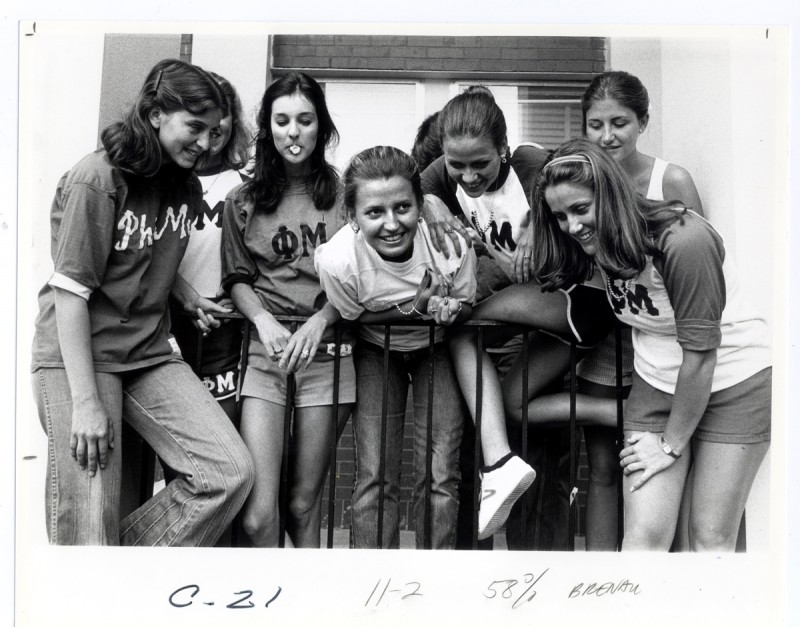 The first club with a name bearing Greek letters emerged in 1900 as a “society for the advancement of the mathematical science.” Phi Mu Gamma organized as the first sorority on campus in 1902. Alpha Beta Tau formed in 1903. On April 14, 1910, Alpha Delta Pi granted a charter to this chapter, making it the first national sorority.
The first club with a name bearing Greek letters emerged in 1900 as a “society for the advancement of the mathematical science.” Phi Mu Gamma organized as the first sorority on campus in 1902. Alpha Beta Tau formed in 1903. On April 14, 1910, Alpha Delta Pi granted a charter to this chapter, making it the first national sorority.
Delta Delta Delta formed at Brenau in 1914 when members of three local Greek clubs joined together. Zeta Tau Alpha chartered on Jan. 1, 1911, when it formed from Pi Gamma Theta, which emerged in 1907.
By the 1930s, Brenau claimed 11 sororities. Eight of these were, or would become, national organizations. Six of those prospered into the 21st century – Alpha Chi Omega, Alpha Delta Pi, Alpha Gamma Delta, Delta Delta Delta, Phi Mu, and Zeta Tau Alpha.
However, Brenau’s sororities were even slower to integrate than most campus organizations. In 1994 Kalina Haynes, WC ’98, broke the color barrier with Alpha Gamma Delta 1994, but even as that pivotal event, few African-American women over the next decades have been listed among sorority members even though the Women’s College enrollment has been close to 25 percent black for considerable portions of that time.
Perhaps because of this, black students at Brenau have, over time, sought to form their own Greek organizations. The college’s African-American women forged ties of sisterhood almost as soon as Brenau integrated. Bubbles reported in 1980 that four young black women were members of Alpha Psi Theta, “a colony struggling to become national” that “was started in November of 1977.” In 1994 the first historically black sorority came to campus – Alpha Kappa Alpha. Six years later, students established the Tau Eta Chapter of Delta Sigma Theta Sorority.
Brenau has possessed a remarkable number of sororities for an institution of its modest size and all-female character. With eight national organizations represented, the Greek system at Brenau is both the largest of any women’s college and the only one with official sorority houses.
The Future
At the same time, Brenau remains – for all intents and purposes – a women’s college, one of only a handful still in existence. When other women’s colleges closed or became entirely coeducational, Brenau stayed its course. True, there was a brief moment when Brenau did adopt policies that ultimately permitted a very, very small number of men to enroll at the College even before it created a separate unit (the Evening and Weekend College) open to men. Yet, in the grand scheme of things, this is simply not significant.
Given Brenau’s adaptive history, the next 135 years will witness more innovation and more firsts for Gainesville institution, both as it does things no other university will have yet done and as it does things that, while not new, are new to it. And it is perfectly fine to celebrate those things, too.
As part of the 135th Anniversary celebration, Dr. Wilson has agreed to discuss his book and research on campus at a time to be announced in 2013-14.
- Yonah Hall Lobby, 1909
- Yonah Hall, Date Unknown
- Brenau Women with Horses, c. 1960
